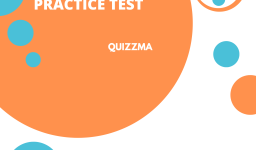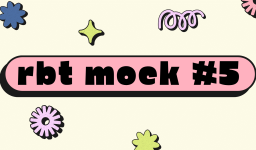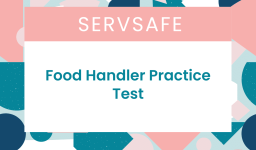Psychology Unit 3 Test
1 Schizophrenia is most closely linked with excess receptor activity for the neurotransmitter
A) dopamine. B) epinephrine. C) acetylcholine. D) serotonin.
2. The nineteenth-century theory that bumps on the skull reveal a person’s abilities and traits is called
- evolutionary psychology
- behavior genetics
- molecular biology
- biological psychology
- phrenology
3. Dendrites are branching extensions of
- neurotransmitters
- endorphins
- neurons
- myelin
- endocrine glands
4. The function of dendrites is to
- receive incoming signals from other neurons
- release neurotransmitters into the spatial junctions between neurons
- coordinate the activation of the parasympathetic and sympathetic nervous systems
- control pain through the release of opiate-like chemicals into the brain
- transmit signals to other neurons
5. An axon is
- a cell that serves as the basic building block of the nervous system
- a layer of fatty tissue that encases the fibers of many neurons
- an antagonist that blocks neurotransmitter receptor sites
- the extension of a neuron that carries messages away from the cell body
- a junction between a sending and receiving neuron
6. The longest part of a neuron is likely to be the
- dendrite
- axon
- cell body
- synapse
- myelin sheath
7. In transmitting sensory information to the brain, an electrical signal travels from the _______ of a single neuron.
- cell body to the axon to the dendrites
- dendrites to the axon to the cell body
- axon to the cell body to the dendrites
- dendrites to the cell body to the axon
- axon to the dendrites to the cell body
8. The speed at which a neural impulse travels is increased when the axon is encased by a
- sympathetic nerve
- myelin sheath
- endocrine gland
- pituitary gland
- sympathetic vesicle
9. The slowdown of neural communication in multiple sclerosis involves a degeneration of
- thresholds
- dendrites
- endocrine gland
- myelin sheath
- pituitary gland
10. The axon of a resting neuron has gates that do not allow positive sodium ions to pass through the cell membrane. What is this characteristic called?
- myelin sheath
- threshold
- selective permeability
- action potential
- parasympathetic nervous system
11. The minimum level of stimulation required to trigger a neural impulse is called the
- reflex
- threshold
- synapse
- action potential
- refractory period
12. The spatial junctions where impulses are chemically transmitted from one neuron to another are called
- neurotransmitters
- neural networks
- synapses
- axons
- thresholds
13. The chemical messengers released into the spatial junctions between neurons are called
- hormones
- neurotransmitters
- synapses
- sensory neurons
- motor neurons
14. Neurotransmitters are chemical messengers that travel across the
- cell body
- synaptic gap
- axon
- myelin sheath
- threshold
15. Reuptake refers to the
- movement of neurotransmitter molecules across a synaptic gap
- release of hormones into the bloodstream
- inflow of positively charged ions through an axon membrane
- reabsorption of excess neurotransmitter molecules by a sending neuron
- the ending of the refractory period
16. When the release of ACh is blocked, the result is
- depression
- muscular paralysis
- aggression
- schizophrenia
- euphoria
17. Transferring messages from a motor neuron to a leg muscle requires the neurotransmitter known as
- dopamine
- epinephrine
- acetylcholine
- insulin
- endorphin
18. José has just played a long, bruising football game but feels little fatigue or discomfort. His lack of pain is most likely caused by the release of
- glutamate
- dopamine
- acetylcholine
- endorphins
- insulin
19. Alzheimer’s disease is most closely linked to the deterioration of neurons that produce
- dopamine
- acetylcholine
- epinephrine
- endorphins
- glutamate
20. An undersupply of the major inhibitory neurotransmitter known as ____ is linked to seizures
- glutamate
- GABA
- serotonin
- ACh
- dopamine
21. Migraine headaches are most closely linked with an
- oversupply of GABA
- undersupply of serotonin
- oversupply of glutamate
- undersupply of acetylcholine
- oversupply of norepinepherine
22. Psychoactive drugs interfere with normal neural transmission. Where does this interference take place?
- axon
- cell body
- myelin sheath
- synapse
- hormones
23. What are the molecules that are similar enough to a neurotransmitter to bind to its receptor sites on a dendrite and mimic that neurotransmitter’s effects called?
- agonists
- antagonists
- endorphins
- endocrines
- action potential
24. Which of the following are located exclusively within the brain and spinal cord?
- sensory neurons
- motor neurons
- myelin sheath
- interneurons
- axons
25. The body’s speedy, electrochemical information system is called the
- circulatory system
- threshold
- action potential
- nervous system
- endocrine system
26. The somatic nervous system is a component of the ______ nervous system
- peripheral
- autonomic
- central
- sympathetic
- parasympathetic
27. While you are hiking in the mountains, a rattlesnake slithers across your trail. Which of the following triggers the “fight or flight” response, increasing your heart rate and blood pressure, as you run away?
- somatic nervous system
- sympathetic nervous system
- motor cortex
- limbic system
- parasympathetic nervous system
28. A simple, automatic, inborn response to a sensory stimulus is called a
- neural network
- action potential
- neurotransmitter
- reflex
- threshold
29. A football quarterback can simultaneously make calculations of receiver distances, player movements, and gravitational forces. This best illustrates the activity of multiple
- endocrine glands
- endorphin agonists
- neural networks
- endorphin antagonists
- thresholds
30. The master gland of the endocrine system is the
- thyroid gland
- adrenal gland
- pituitary gland
- pancreas
- hypothalamus
31. To identify which specific brain areas are most active during a particular mental task, researchers would be most likely to make use of an
- fMRI
- hemispherectomy
- ACh agonist
- brain lesion
- MRI
32. Your life would be most immediately threatened if you suffered destruction of the
- amygdala
- hippocampus
- angular gyrus
- corpus callosum
- medulla
33. Which of the following structures in the brainstem help coordinate movements and lies above the medulla?
- reticular formation
- hippocampus
- pons
- thalamus
- hypothalamus
34. The medulla is to the control of ____ as the cerebellum is to the control of _____.
- eating; sleeping
- breathing; walking
- emotion; motivation
- memory; attention
- hearing; seeing
35. The reticular formation is located in the
- brainstem
- limbic system
- sensory cortex
- motor cortex
- cerebellum
36. Your ability to experience physical sensations is most likely to be disrupted by damage to your
- corpus callosum
- angular gyrus
- hippocampus
- amygdala
- thalamus
37. Addictive drug cravings are likely to be associated with reward centers in the
- thalamus
- cerebellum
- reticular formation
- nucleus accumbens
- angular gyrus
38. Which lobes of the brain receive the input that enables you to feel someone scratching your back?
- parietal
- temporal
- occipital
- frontal
- cerebral
39. An area at the rear of the frontal lobes tat controls voluntary movements is called the
- angular gyrus
- hypothalamus
- motor cortex
- reticular formation
- frontal association area
40. To trigger a person’s hand to make a fist, José Delgado stimulated the individual’s
- motor cortex
- hypothalamus
- sensory cortex
- reticular formation
- limbic system
41. The association areas are located in the
- spinal cord
- brainstem
- thalamus
- limbic system
- cerebral cortex
42. The process of anticipating that you will be punished for misbehaving takes place within the
- limbic system
- sensory cortex
- reticular formation
- association areas
- sympathetic nervous system
43. In 1861, Paul Broca studied a stroke patient he called “Tan.” He was called this because as a result of brain damage, it was the only word he could pronounce. Based on Broca’s early work, which of the following brain regions is involved in speech production?
- angular gyrus
- left temporal lobe
- sensory cortex
- left frontal lobe
- auditory cortex
44. Which brain area is primarily involved with controlling speech?
- sensory cortex
- angular gyrus
- association areas
- Broca’s area
- hypothalamus
45. Which brain area is primarily involved with understanding and producing meaningful speech?
- sensory cortex
- angular gyrus
- association areas
- Wernicke’s area
- hypothalamus
46. Physical exercise and exposure to stimulating environments are most likely to promote
- phrenology
- neurogenesis
- hemispherectomy
- reward deficiency syndrome
- plasticity
47. Psychologist Michael Gazzaniga asked split-brain patients to stare at a dot as he flashed HE·ART on a screen. HE appeared in the left visual field, ART in the right. When asked, patients said they saw
- HE
- ART
- HEART
- EA
- nothing. They were unable to complete the task.



